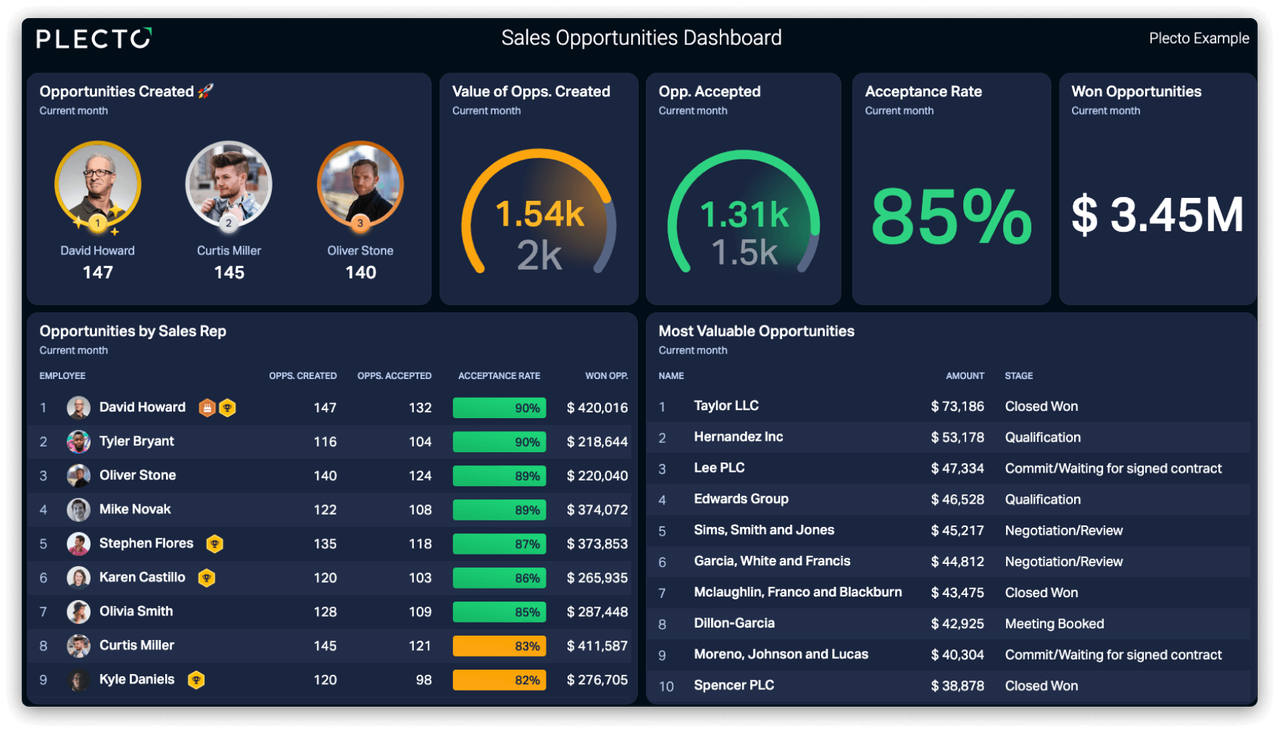The more qualified prospects in your pipeline, the more deals you’ll close, and the faster you can grow your business.
In this guide, you’ll learn everything you need to know about sales prospecting. We’ll look at why prospecting in sales is so important, the difference between prospects and leads, and actionable sales prospecting strategies you can test out today.
Let’s dive straight in.
What is Sales Prospecting?
Sales prospecting is the process of identifying relevant potential customers for your company’s products or services.
During the prospecting process, you’ll combine your knowledge of your ideal customer profile (ICP) with a targeted search and end up with a list of target prospects complete with their name, contact details, job title, and any other relevant information you need.
Once you have your prospect list, you can use an outreach channel like cold email or LinkedIn outreach to get in touch and start a conversation.
Sales Prospects vs. Sales Leads
First, let’s define the difference between sales prospects and sales leads.
Sales prospects are cold contacts. They’re people who match your ICP from the outside, but who aren’t currently in your sales pipeline.
A sales lead is anyone who your team views as an active opportunity in your pipeline. For example, it could be someone who filled out your website’s contact form asking for more details, or, it could be someone who has already had two meetings with your sales team and is ready to sign the proposal.
They’re both key terms in B2B sales, so it’s worth knowing the difference.
Build your first dashboard.
Start your 14-day free trial today
Benefits of a Clear Sales Prospecting Process for Your Company
1. Proactively Reach out to Qualified Prospects
A well-oiled prospecting process means you don’t need to rely on inbound leads through SEO or referrals to grow your business.
Those channels are effective, but having an outbound prospecting system means you can start proactively identifying and contacting prospects who you know will be interested in what you have to offer.
You can start adding new leads to your pipeline daily and hit growth numbers that wouldn’t be possible with solely inbound marketing.
2. Allows You to Build Clear Processes
High-performing sales teams know what they’re working towards every year, quarter, month, and week.
With a clearly defined prospecting strategy, your team can work together to hit your company OKRs and improve your sales effectiveness.
For example, you can create standard operating procedures (SOPs) for your team to follow for tasks like:
- Building a list of prospects
- Sourcing a verified email address
- Writing effective email templates
- Sending follow-ups during the sales process
The clearer your prospecting processes, the more leads you’ll be able to generate every week.
3. Only Target People Matching Your Ideal Customer Profile
If your prospecting process isn’t well defined, you’ll end up identifying and contacting prospects who aren’t a perfect fit for your business.
The result?
Wasted time for both your sales team, and the people you’re reaching out to.
If you can create a clear process you’ll be able to consistently identify high-quality sales prospects and can be confident that every prospect your sales team is talking to will get value from the conversation.
4 Powerful Sales Prospecting Tactics to Identify and Connect with Future Customers
In the next four sections, I’ll show you actionable ways to identify and reach out to qualified prospects who are an ideal fit for your product or service.
Let’s take a look:
1. Identify Qualified Leads Using B2B Databases
Today, you don't need to run your prospecting process manually. You can use automated prospecting tools such as B2B databases to identify prospects.
Four good options are:
- ZoomInfo: The leading B2B data provider with detailed information on millions of decision-makers.
- UpLead: Quickly filter through prospects based on their job title, location, company type, and more.
- BuiltWith: Identify prospects based on the technology their website uses.
- SalesIntel: Full-funnel B2B contact data intelligence platform with human-verified emails and cell phone numbers, technographics, firmographics, intent data and more.
These tools let you filter for prospects based on almost any criteria you can think of. For example, ZoomInfo has filters for annual revenue, job title, location, postcode, software used on a website, and much more.
If you know what your ICP looks like, these tools are a shortcut to creating a list of people matching those exact criteria.
However, B2B databases can have out-of-date data. To make sure that every email you source is correct, verify each email address with a tool like NeverBounce. This adds a small extra step to your process, but will ensure you maintain a low email bounce rate and improve your email deliverability.
2. Use LinkedIn Sales Navigator to Build Lists on Linkedin
Almost every B2B professional uses LinkedIn on a regular basis.
People update their job titles when they change roles and use the platform for networking purposes, so they will be open to conversations if you reach out politely.
To prospect with LinkedIn, you’ll need a Sales Navigator subscription. This opens up a wide range of new search filters that you can use to identify good-fit sales prospects for your business.
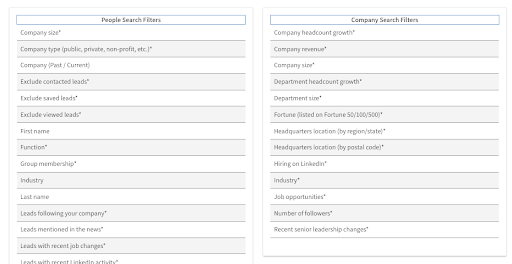
First, you’ll need to run a search.
Once you’ve identified a list of prospects that match your criteria, you can use Sales Navigator to save the best-fit prospects to a list inside LinkedIn.
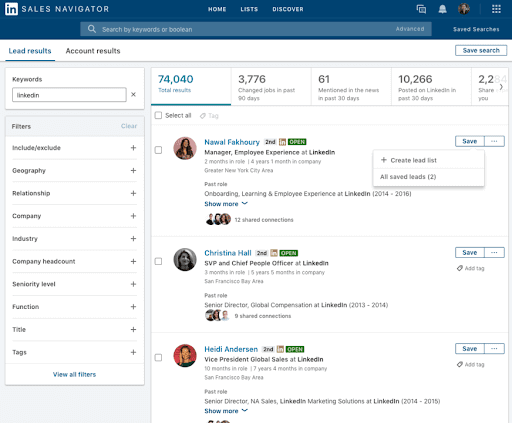
Source: LinkedIn Pulse
You can create different lists for different segments of your ICP. For example, you could create a list with CEOs, and another with people matching your Head of Growth criteria.
When you’re happy with your list of prospects, you can either:
- Use InMails or LinkedIn automation tools to reach out to each person on the platform
Export their emails using Sales Navigator and send each person an email
It’s an excellent platform for your sales prospecting needs.
3. Connecting with Prospects with Cold Email
Cold email is a powerful sales prospecting channel. You can connect with prospects in their personal inbox that they check throughout the day and initiate a conversation.
If your templates are effective, you can see a 10-20% reply rate with ease.
When running a cold email process, you’ll need to start with a prospect list. You can source this using the prospecting tools we’ve looked at above, use LinkedIn, or, run a manual search and then use email finding tools to source verified contact details.
Once you have a list of prospects, you’ll need to format your prospect list into a spreadsheet with key details like first name, company name, and any other information you might include in your email template in a unique column.
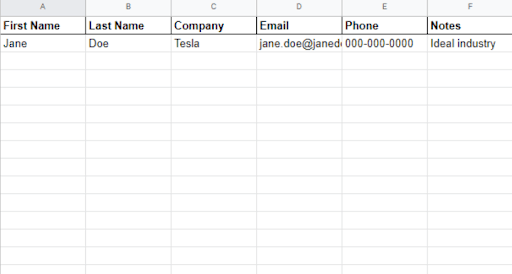
When you come to using an outbound sales tool like QuickMail to send your emails, it will use this spreadsheet to add personal details to each email ensuring each one is personalized and unique.
Next, you’ll need to write your cold email templates. When writing, you can add attributes to your template, such as:
- {{prospect.first_name}}
- {{company.name}}
- {{prospect.custom.Job_Title}}
These will automatically fill using the information from your spreadsheet. Take this email template sent as a podcast invite:
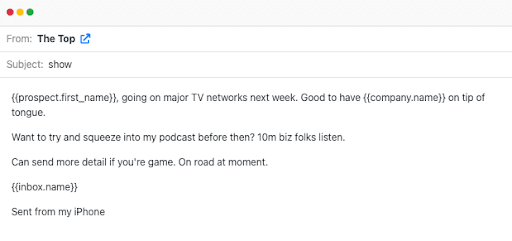
When your email is sent, it will be personalized to the recipient and stand out in their inbox because of the relevant personalization.
Another major benefit to using a cold email tool is that you can add automatic follow-up emails if someone doesn’t reply to your first email. After your chosen delay, your software will automatically send another email reminding your prospect of what you’re reaching out about.
Considering over half of replies to cold email campaigns come from a follow-up, this is an essential step.
Once your campaign is running, you’ll see interested prospects start replying to your emails and will be regularly booking meetings with interested prospects who want to learn about your products or services.
4. Join Relevant Communities
Community-based marketing is a powerful prospecting method.
You can join groups and networks where your prospects spend time, build relationships, and over time, have a source of leads for your business.
First, you’ll need to identify the communities your customers are in. A simple way to do this is to run a survey or series of interviews with your existing customers and ask them directly: “where do you go to stay up to date with the latest industry news, trends, and network with other people?”
Once you have a list of the communities your customers are in, you can start to spend time there doing things like:
- Share useful content to help the community
- Helping people who have questions that you know the answer to
- Building trust with people similar to your existing customers
Over time, you’ll build strong relationships with people in your target market. People will know that you’re the go-to person for the problem you solve and when they need help, they’ll reach out to you.
Community-based sales prospecting takes longer than using tools like a B2B database or reaching out directly to people with a cold email, but it does work. It’s a long-term strategy, but if you’re patient and consistent, it will pay off.
Wrapping Up
Implementing an effective sales prospecting strategy is essential to the success of any B2B company.
Once in place, you’ll quickly see benefits like improved quality of leads in your pipeline, and a more organized sales team.
To see the best results, you’ll need to test different prospecting methods and channels. Over time, you’ll start to learn the best ways to identify and get in touch with people who match the criteria for your ICP. With a clear sales pitch, you’ll be booking meetings on autopilot.
Once you’re running your sales prospecting process, you can use a platform like Plecto to track your results and most important KPIs.
Jeremy is the founder of QuickMail.io, a SaaS company that enables personal one-to-one conversations at scale through automation – for outbound outreach, inbound leads, trial/onboarding, customer communication, and more. Before founding QuickMail, he worked for more than 15 years as a developer in the video game industry and in finance.

